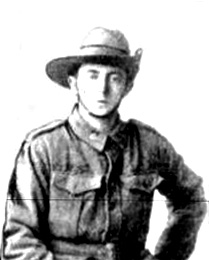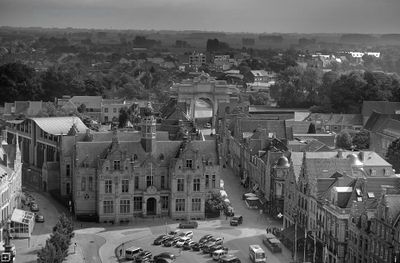Difference between revisions of "Henry Seddon"
From Our Contribution
| Line 78: | Line 78: | ||
| label22 = Monument | | label22 = Monument | ||
| − | | data22 = [[Mundijong Honour Roll]]<br />[[Menin Gate Memorial]] | + | | data22 = [[Mundijong Honour Roll]]<br />[[Menin Gate Memorial]]<br />[[ANZAC Memorial Park (Byford)]] |
| label23 = Medals | | label23 = Medals | ||
Revision as of 21:45, 29 December 2017
 Western mail 9 Nov 1917 page 2 S | |
| Personal Information | |
|---|---|
| Date of Birth | not known |
| Place of Birth | Higer Openshaw, Manchester, England |
| Death | 4 Oct 1917 |
| Place of Death | Broodseinde, Belgium |
| Age at Enlistment | 23 years, 10 months |
| Description | 5'2" (1.57m) tall; weight 118 lbs (53.5kg); fresh complexion, grey eyes, dark brown hair. |
| Occupation | railway porter |
| Religion | Methodist |
| Next of Kin | Father Mr William Seddon |
| Military Information | |
| Reg Number | [ 2627] |
| Date of Enlistment | 21 Aug 1916 |
| Rank | Private |
| Unit/Formation | 43rd Battalion, 5th Reinforcement /11th Brigade, 3rd Division |
| Date of Embarkation | 9 Nov 1916 - 10 Jan 1917 |
| Ship Embarked On | HMAT A8 Argyllshire |
| Fate | Killed in Action 4 Oct 1917, Broodseinde, Belgium |
| Monument |
Mundijong Honour Roll Menin Gate Memorial ANZAC Memorial Park (Byford) |
| Medals |
British War Medal Victory Medal |
Contents
Pre War
War Service
Three weeks after commencing his training Henry was allocated to the 7th reinforcement draft for the 48th Battalion, but a week later this changed to become the 5th draft for the 43rd Battalion.
Arriving in England, Henry was sent to the 13th Training Battalion at Durrington to prepare for the Western Front.
On 25 Apr 1917 Henry proceeded overseas to France through Folkestone, and entered the 3rd Division's Base Depot in Étaples. On 1 May 1917 Henry was taken on strength byt he 43rd Battalion, who at that time were engaged in a 4 day route march from Armentiers to Jurnay. Henry would have participated in the last three days of it.
At what was to become known as the Battle for Broodseinde Ridge, the 45th Battalion was tasked with taking and holding the first line of objectives, and it did this with success. The attack to capture the village of Broodseinde began before dawn on the 4th of October 1917. It was a large operation, involving twelve divisions, which included British, Australian and a New Zealand Division, attacking along a 10 kilometre front. In the centre was I and II Anzac Corps, composed of three Australian divisions and the New Zealand Division.
Before the attack began, a seventh of Australians soldiers became casualties through heavily enemy shelling. The Germans had also launched an attack of their own and the Australians were confronted with enemy troops coming towards them. Our soldiers proceeded on through the German assault waves and gained all their objectives along the ridge. The cost was heavy with the enemy's pillboxes difficult to overcome. However, their casualties, which included Henry for a days work were 37 killed in action, and 104 wounded.
Red Cross file:" At Passchendaele Ridge I was wounded the same day as Seddon. He was at the 1st Dressing Station with me and his wound was not one that I should have thought very serious. I do not know what became of him." Mowbray W. Pte 1878"Seddon was killed at Warneton and buried there." Black A. Lt
"He was in C Coy, IX or X Platoon. I saw him blown up by a shell on the 4th Oct at Ypres, Zonnebeke during an attack. There was nothing left of him to bury. He was short dark chap, clean shaven." Horne W.L.C. Pte 838
While these three versions all differ as to where Henry's death occurred, there is no doubt that he was killed. His personnel records contain an entry indicating his burial had occurred 900 yards ENE of Zonnebeke. However, it was unable to be found later and so he is commemorate on the Ypres Menin Gate memorial.
Notes

